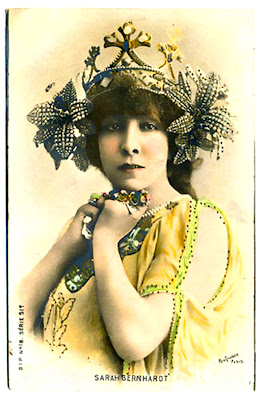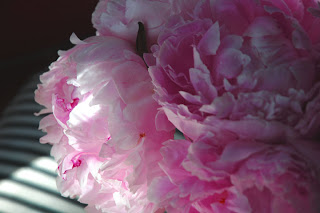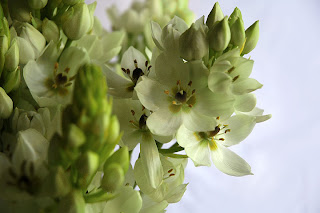





 Such is the nature of our society today that we hear an awful lot about female entertainers (more than I need to know), a few of whom aspire to be divas and quite a few more who are dubbed as such by the popular gossip rags and the paparazzi. While almost all qualify for the mantle due to their outrageous and demanding behavior, almost all fail as a legitimate diva because they simply do not have the talent, guts and wit. A few who can be considered to be true divas come to mind; Streisand; Madonna perhaps; Elizabeth Taylor certainly. I imagine that everyone has a candidate or two who I am sure deserves to be on a short-list of genuine "Divas". But I doubt that any can measure up to the fin-de-siècle French actress "Sarah Bernhardt" who combined a flair for the flamboyant and outrageous with arguably one of the greatest theatrical talents of all time. Her wit was widely appreciated, and when no less a person than Oscar Wilde politely asked at her salon; "Do you mind if I smoke?" she adroitly replied "I don't care if you burn".
Such is the nature of our society today that we hear an awful lot about female entertainers (more than I need to know), a few of whom aspire to be divas and quite a few more who are dubbed as such by the popular gossip rags and the paparazzi. While almost all qualify for the mantle due to their outrageous and demanding behavior, almost all fail as a legitimate diva because they simply do not have the talent, guts and wit. A few who can be considered to be true divas come to mind; Streisand; Madonna perhaps; Elizabeth Taylor certainly. I imagine that everyone has a candidate or two who I am sure deserves to be on a short-list of genuine "Divas". But I doubt that any can measure up to the fin-de-siècle French actress "Sarah Bernhardt" who combined a flair for the flamboyant and outrageous with arguably one of the greatest theatrical talents of all time. Her wit was widely appreciated, and when no less a person than Oscar Wilde politely asked at her salon; "Do you mind if I smoke?" she adroitly replied "I don't care if you burn". Sarah Bernhardt was reputed to have many lovers in her circle, especially noted artists and painters, as well as being rumored to have had an affair with noted impressionist "Louise Abbema". Miss Bernhardt, who came to be known as "The Divine Sarah", was rumored to have slept in a coffin in order to immerse herself in the tragic nature of the characters she would play on stage. Certainly, she used still photographs of herself at repose in the coffin to great effect. However, what really stands her apart, and garnered the epithet - "The greatest actress of all time" - was her overarching command of her stage craft. Consider that, even after she had a leg amputated due to gangrene that infected her after a tragic fall in Rio de Janeiro, she was still able to fill theatres to capacity even though she refused to wear a prosthetic limb. Sarah Bernhardt's total absorption into characters she played captivated audiences around the world, and her mellifluous voice, described by Victor Hugo as 'golden' and by many contemporary critics as 'silver', simply was unparalleled in the world of entertainment. The noted American author Mark Twain stated: “There are five kinds of actresses: bad actresses, fair actresses, good actresses, great actresses, and Sarah Bernhardt.” Almost until her death, a Sarah Bernhardt performance was a much sought after ticket wherever she played. She was renowned in Paris, London New York and Rio and this was before the advent of cinemas and the widespread introduction of movies.
And yet, a mere hundred years after her golden years, she is almost unknown, an artist and celebrity who has become enveloped in the shrouds of time, and almost completely forgotten. In fact, apart from the world of theatrical archives and historians she would have vanished completely were it not for one seemingly minor event that occurred during her lifetime. Such were the accolades that were thrust upon this scintillating talent, from her peers and politicians alike, that the fact that a flower breeder in her native France would choose to name a peony after her as a tribute to her brilliance would probably be considered as a minor footnote in her career. How ironic that it is this occurrence that has kept the name "Sarah Bernhardt" alive and vibrant around the world for people who love flowers and plants, and in particular peonies. Yet little is now known about Sarah Bernhardt today, although some insightful biographies have been published recently - and even less is known about the genius who created the "Sarah Bernhardt" peony; Victor Lemoine.
The intersection of these two giants in their fields created a seminal occurrence; namely one of the most beloved plants in the world, with their stunning fully double, sweetly fragrant flowers featuring rich rouched chiffonades of glorious pink petals and which endure whether on the plant or in a vase. Paeonia "Sarah Bernhardt" truly is a masterpiece.
By the time Victor Lemoine created paeonia "Sarah Bernhardt" and introduced the dazzling bloom in 1907 he was already famous for the prodigious cultivars that he had introduced to the world. His work was not only prodigious in quality, but in the volume of output. I will chronicle his work at later date as he is truly worthy of review, but suffice it to say that this man created cultivars of peonies, lilac and hydrangeas, to name just a few species that he worked on, that are still in use and much sought after today!
What I find most remarkable is that, while we are incessantly and continuously inundated with new varieties of many flowers, especially roses, but also chrysanthemums, carnations, etc., (hell it seems like there is a new variety of gyp each year these days!!) the peonies we use in the cut flower trade are generally over a hundred years old. Now there are some notable exceptions such as the classic P. "Red Charm" 1947 and P. "Coral Sunset", but in general the really striking varieties such as P. "Duchesse de Nemours", P. "Festiva Maxima" and of course the aforementioned Sarah B are vintages of at least a century.
Given that we are in a fashion-based business, one realises that, now more than ever, the breeders have an incentive to churn out new "models" each year in order to harness royalties for the products. After an initial flurry of demand for this season's introductions, more often than not, the revenues taper off so the breeders must keep bringing out new items to stimulate cash flow. Once in a while a rose breeder will find a rose that endures thanks to a combination of market demand and desirable productivity. One notable example of this is "Vendela", which due to its performance for the florist, its color and shape, as well as very high productivity, and good shipping endurance, has made this one of the greatest commecial cut roses of our era. In fact such has been the popularity of this rose that the royalties are set to expire, which for a breeder means that this is now a non-performing asset.
All this makes me wonder how many really great roses ( or other commercial species for that matter) may be on the trash heap of fashion or in the garbage pail of non-performing assets. More than a few, I suspect, and certainly there will be some that will become interesting from a growers' perspective as the marketplace orients toward demanding fragrant varieties. I have a book in my collection called "McFarland's Modern Roses", published in 1965 which has over 10,000 roses listed...then! I like to peruse this now and then to look up names as well as check out old varieties, and it can be quite entertaining. I imagine there are are items in there worthy of a second look. How about this: "Grey Pearl" (aka "the Mouse") bred by McGredy and introduced by Jackson & Perkins in 1945. Double flower with large ovoid bud, 40-45 petals (which is excellent), high-centered tea (not-so-cool, but manageable) fragrant and the color is lavender gray shaded olive and tan!!! Sounds awesome.
Mmm...I think I have digressed from my original topic. I am struck by the fact that no matter how famous one may be during one's lifetime, eventually the sands of time will erode the most magnificent personages, and what endures seems to be only that which is beautiful and true, such as great music, great paintings and great flowers. Especially great flowers; even the Peony is named for the pupil of the great Greek doctor Asclepias, a humble shepherd called Paeon. While today we recognise the Asclepia as a so-so flower, it is the Peony that today far outshines the teacher.
Incidentally, Vendela was a well known model from Sweden who had a short modelling career in the 1970's, but whose name endures, her beauty personified to this day in the classic cream rose.
It is also comforting to realise that a somewhat mediocre rose, appropriately called "Trump", appears to have a very short life expectancy.
A happy, safe and prosperous New Year to all.















